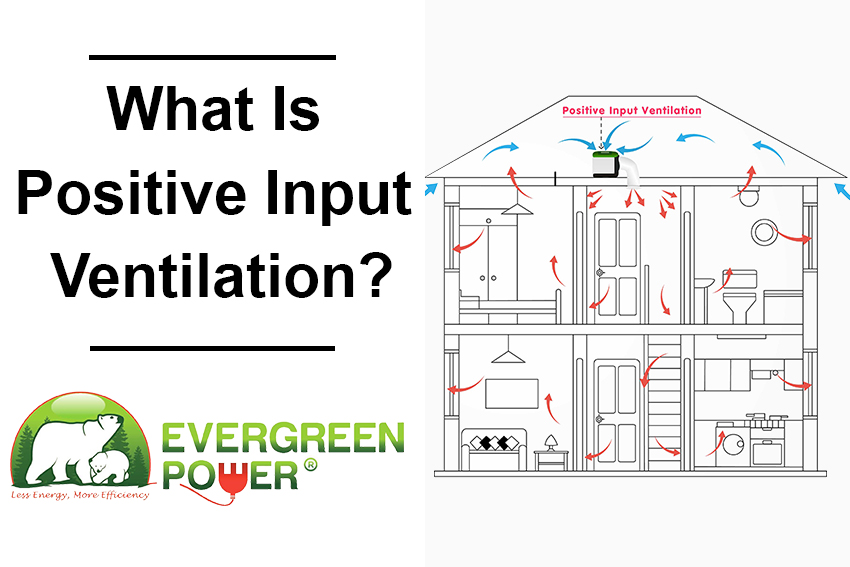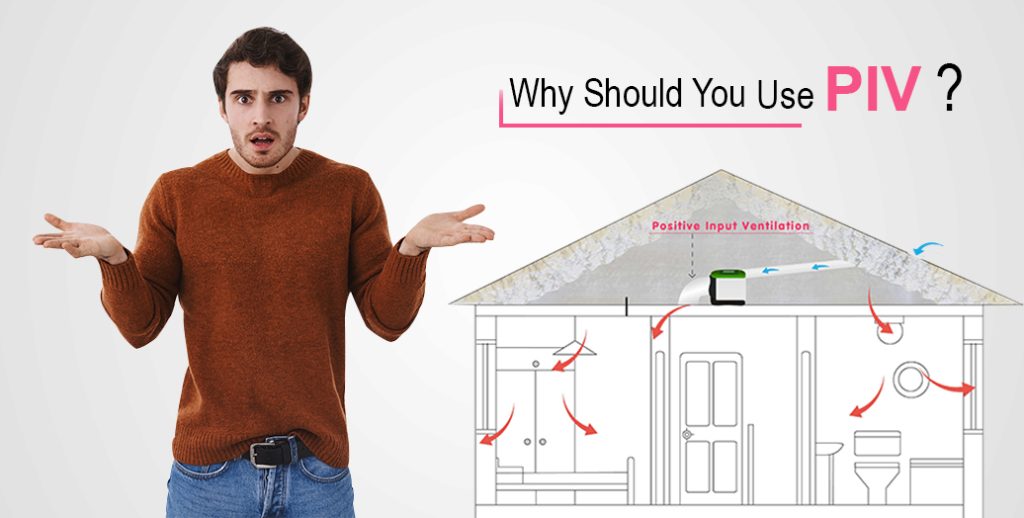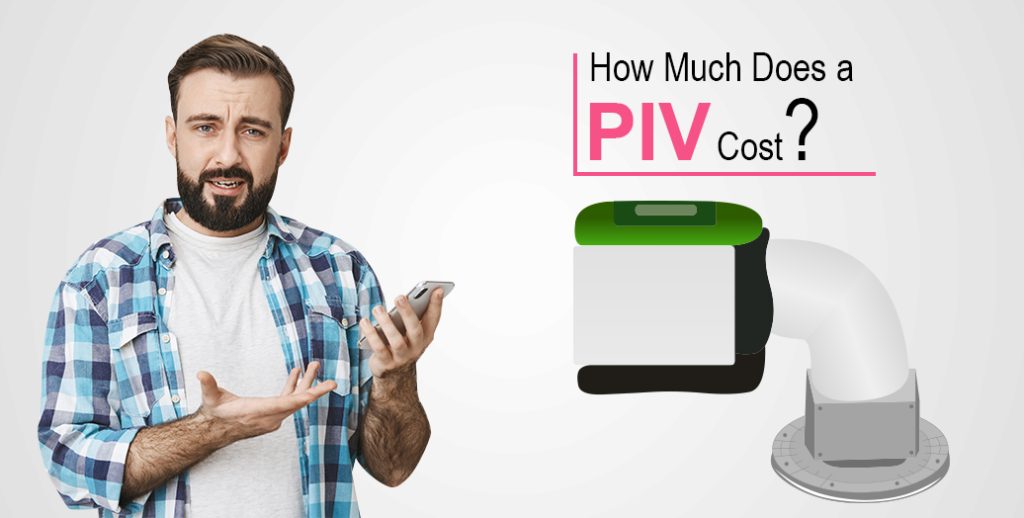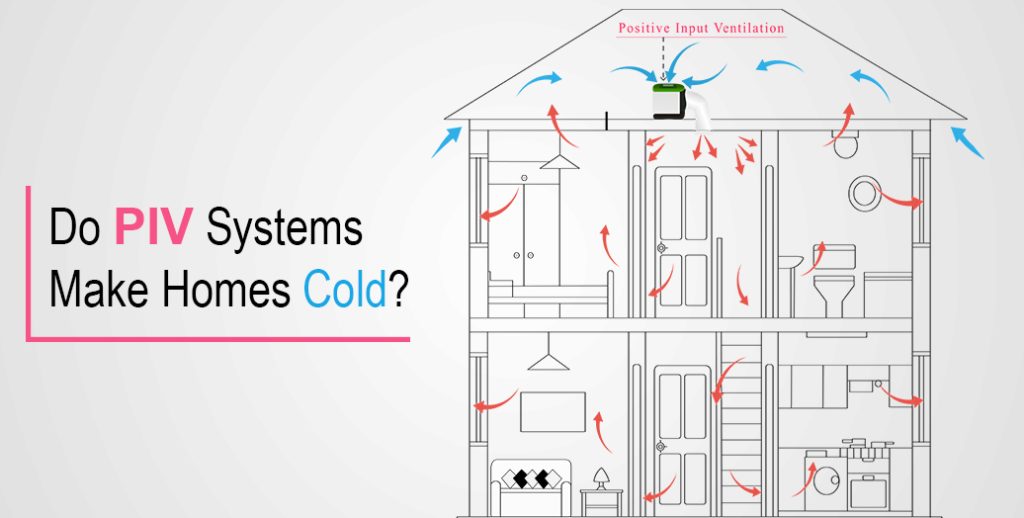
Positive Input Ventilation (or “PIV” for short) is an incredibly effective way for householders to control their indoor air quality. PIV is a whole-house system that aims to create fresh and healthy living spaces thanks to filtered air delivered throughout the home continuously.
PIV is an attractive proposition for homeowners because it’s ideal when they don’t want to remove walls or remove any plaster to get back to bare brickwork. If you’re new to positive input ventilation, here’s everything you need to know on the subject.
How Does a PIV System Work?
A PIV system typically gets installed in the void of a roof or inside a wall for apartments. It works by drawing in external air through a filtration unit, and the filtered air gets heated before getting displaced to any living spaces.
While the filtration system gets fitted to in the loft or inside a wall, diffuser units can get installed on all ceilings (where duct runs can get installed) to create a whole-home PIV system.
Why Should You Use PIV?

As a homeowner, you will have undoubtedly invested in measures to make your home energy-efficient and draught-proof. For example, your home likely has double or triple-glazed exterior doors and windows.
However, the trouble with having a well-insulated home is that humid air cannot escape and will cause problems like mold growth, dust build-up, and condensation. A positive air system is a perfect solution to those problems for the following reasons:
Cheaper Than Running Dehumidifiers or Air Conditioners
The job of a dehumidifier is to remove humidity in the air. Air conditioning systems do the same thing, but they can also produce icy-cold air. One major disadvantage of using either dehumidifiers or air conditioners is that they cost a lot of money to operate.
In contrast, positive input ventilation systems are significantly cheaper to run. The most you can expect to pay is a mere one to two pence per day.
Reduced Condensation and Mould Growth Prevention
Perhaps the most significant advantage of positive input ventilation UK is how it helps diminish and eradicate condensation in any household. That’s because there’s a constant flow of fresh, filtered air into the home that reduces humidity levels.
What’s more, as the filtered air gets heated before being displaced into a home’s living spaces, mold spores cannot easily form on surfaces due to a lack of condensation.
Householders Can Enjoy Improved Health
If you or anyone else in your family experiences problems with breathing, one of the most significant benefits of a PIV system is how everyone will enjoy improved health.
When mold appears, it isn’t just unsightly; it can also cause musty smells in homes. If people breathe in those smells, it can exacerbate respiratory conditions like asthma and, in some extreme cases, even cause those conditions to occur in otherwise healthy individuals.
Virtually No Maintenance Required
One of the biggest complaints about using dehumidifiers and air conditioners is how they require constant maintenance. For example, air vents will often need cleaning and dust removing from them, and split air conditioners need annual system maintenance. The beauty of using a PIV system in your home is that there is virtually no maintenance required. They are fully autonomous systems, and they only need filter replacements every three or five years, depending on where they get installed
Where Can You Use PIV Systems?
A positive input ventilation system can get installed in any residential property. If you live in a house such as a terraced or detached property, a bungalow, or a townhouse, for example, you can have a PIV system installed.
The good news is you can also have a positive input ventilation system fitted if you live in a flat or apartment block, as the filtration units can get fitted inside walls.
How Effective Are PIV Systems?
When looking at a solution like PIV systems, the positive input ventilation cost the UK isn’t the only thing you will consider. You’ll also want to know how effective such systems are for diminishing or even wholly removing condensation from the air.
PIV systems are very effective at what they do. The way they work is simple, the operating costs are extremely minimal, and the noise generated by the fans in the loft or walls is almost silent.
Are Positive Input Ventilation Systems Noisy?
PIV filtrations work in combination with fans to push filtered air through to living spaces. It’s an efficient way of keeping the indoor air fresh and making the air quality in any home significantly better.
If you worry about the noise generated by PIV systems, rest assured that even when fans operate at full speed, they produce next to no noise. For the most part, fans run at low speeds to gently push air into living spaces.
How Much Does a PIV Cost?

One of the questions people new to PIV systems often have is, how much does it cost? The answer is, it depends. A positive input ventilation system cost can vary, but you can expect to pay between £2,500 and £4,000 for a PIV system professionally installed.
What’s unique about PIV systems is how there is little maintenance or additional outlay to consider after installation, making them cost-effective solutions.
Can Homeowners Install PIV Systems Themselves?
A professional installation of a positive input ventilation system from an experienced and skilled installer like Evergreen Power is necessary for several reasons. Firstly, components need to get installed in hard-to-reach locations.
Secondly, they require connection to mains electricity and must only get done by competent installers. Lastly, if a system doesn’t get installed correctly, the property won’t reap the benefits of a PIV system.
Do PIV Systems Make Homes Cold?

PIV systems work by drawing in external air, filtering it, heating it, and gently displacing it throughout the home. There is minimal heat loss involved with PIV systems, especially in properties with proper insulation.
Conclusion
Positive input ventilation systems offer homeowners a multitude of benefits, are completely autonomous in operation and require virtually no maintenance. Contact us today to receive a free, no-obligation quote for a PIV system in your home.
[helpie_faq group_id=’603’/]


